Mastering the Shaddah—a sign of letter doubling—is key in Tajweed, especially when it appears on Noon (ن) and Meem (م). These Mushaddad letters require a clear nasal sound known as Ghunnah, held for two counts. While Meem Sakinah sometimes uses Ghunnah depending on what follows, Noon and Meem Mushaddadah always demand it.
Understanding how to handle “stressed” or “doubled” letters—a concept denoted by a tiny symbol known as a Shaddah—is one of the most crucial first steps in learning Tajweed.
Although this rule can be applied to a wide variety of letters, it has a particularly lovely effect on two letters: Noon (ن) and Meem (م).
The foundation of correct recitation is mastering the straightforward rule for these two letters, which will instantly improve the authenticity and polish of your reading. Together, let’s start this fundamental lesson.
Shaddah And Mushaddad Meaning
The word “Shaddah” itself means “intensification” or “strengthening.” Mushaddad meaning in English is a letter that has a Shaddah symbol on it is called a “Mushaddad” letter, meaning it is an “intensified” or “doubled” letter.
Think of it as giving the letter extra emphasis and a bit more time than a normal letter.
1. The Mushaddad Letter
A mushaddad letter is simply two letters merged into one. The first is silent, carrying a Sukoon (ْ), and the second carries a vowel, whether a Fatha, Dammah, or Kasra.
This doubling or stressing of the sound is the core function of the Shaddah.
For example, the letter نّ is actually a combination of a Noon with a sukoon (نْ) followed by a Noon with a vowel, like a fatha (نَ).
Our journey into this rule begins with a tiny symbol you’ve likely seen many times. Let’s look closely at what it tells us about pronunciation.
2. What is the Shaddah symbol?
Visually, the Shaddah (ّ) looks like a small ‘w’ or the head of the Arabic letter seen (س) placed directly above a letter.
Seeing this symbol is your first clue that a special Tajweed rule is about to be applied.
A letter that has this symbol placed over it is officially called a mushaddad letter. So, when we see a بّ or a لّ, we call them Baa Mushaddad and Laam Mushaddad.
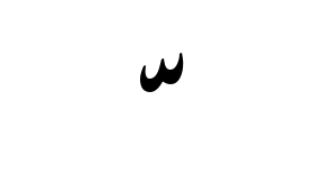
While the Shaddah can appear on many letters in the Arabic alphabet, it carries a very special and beautiful rule when it rests upon the letters Noon (ن) and Meem (م). This is the heart of our lesson today.
Understanding these foundational rules is a key part of Quranica’s Learn Tajweed for beginners Course, which is designed to build a strong and confident base for all my students.
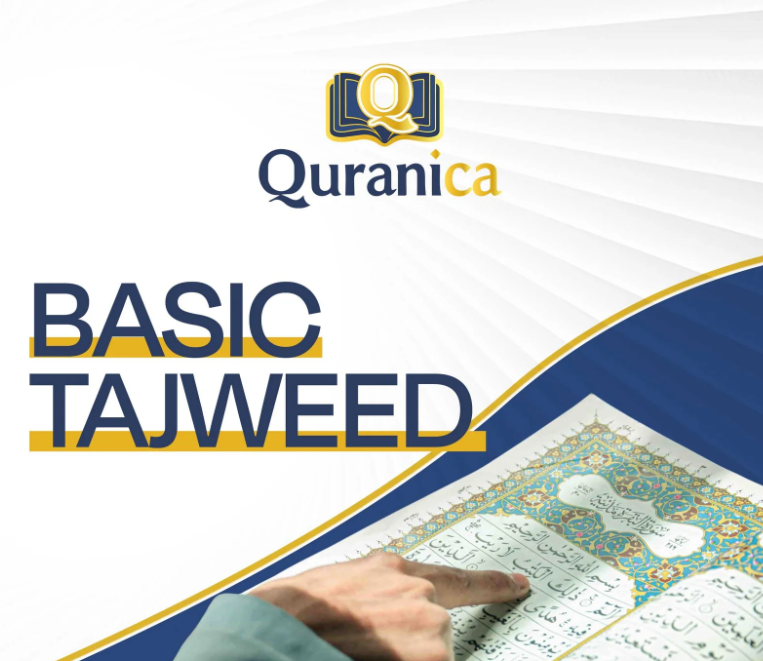
Rules Of Noon And Meem Mushaddad
The rule of Noon and Meem Mushaddad is simple and consistent: whenever you encounter a Meem Mushaddad (مّ) or a Noon Mushaddad (نّ) while reciting the Quran, you must apply a Ghunnah that is held for two counts.
1. What is Ghunnah?
Ghunnah is a nasal sound that emanates entirely from the nasal cavity, which in Arabic is called al-khayshum (الْخَيْشُوم). Ghunnah is an inherent quality of both Noon and Meem.
However, the Ghunnah is at its longest, clearest, and most beautiful when the Noon or Meem is Mushaddad.
2. How to Pronounce Ghunnah in Noon and Meem
For a Noon Mushaddad (نّ), the tip of your tongue should be firmly placed where the Noon is pronounced (behind the top front teeth). While the tongue stays there, the sound should flow completely through your nose.
For a Meem Mushaddad (مّ), you simply close your lips completely. While the lips remain closed, the sound should flow or “hum” entirely through your nose.
3. Ghunnah of Two Counts
In Tajweed, timing is everything. The Ghunnah is not just a sound; it has a specific, measured duration that adds balance to the recitation.
The duration of the Ghunnah on a Noon or Meem Mushaddad must be held for two counts (also known as two harakahs). A “count” is roughly the time it takes to open or close your finger at a moderate, steady pace.
This precise timing is a hallmark of correct and beautiful Tajweed, separating a rushed reading from a mindful and melodic recitation.
For those who find this tricky, practicing with Quranica’s Tajweed test and practice tools can provide instant feedback.

Read also about: The Meem Rules in Tajweed – Full Guide To All Types Of Meem
The Rule of Noon Mushaddadah (نّ) in Tajweed
Whenever we encounter a Noon with a Shaddah (نّ), we must pronounce it with a clear and prolonged Ghunnah.
1. What is the Sound of Noon Mushaddadah?
This sound is a nasalization, meaning the sound flows clearly through the nasal passage. We must hold this Ghunnah for a duration of two counts, or harakat.
You can feel the vibration in your nose as you correctly pronounce it. It is a defining sound of proper Quranic recitation.
2. Examples of Noon Mushaddadah from the Quran
Let’s look at some examples to see this rule in action.
“إِنَّا أَعْطَيْنَاكَ الْكَوْثَرَ”
“inna a’taynaaka al-kawthar”
“Indeed, We have granted you, [O Muhammad], al-Kawthar.” (Al-Kawthar: 1)
Here, the “Inna” contains a Noon Mushaddadah, which is pronounced with a clear nasal sound (Ghunnah) held for two counts.
“مِنَ الْجِنَّةِ وَالنَّاسِ”
“Min al jinnati wan naas”
“From the jinn and mankind.” (Surah An-Nas: 6)
In this verse, both “jinnati” and “naas” have a Noon Mushaddadah, and both require the application of Ghunnah.
“وَأَنَّهُ هُوَ أَغْنَىٰ وَأَقْنَىٰ”
“wa annahu huwa aghna wa aqna”
“And that it is He who enriches and suffices.” (An-Najm: 48)
The Ghunnah is held for two counts on the Noon Mushaddad in the word “annahu”.
The Rule of Meem Mushaddadah (مّ) in Tajweed
Our second special letter, the Meem, follows the exact same principle. Whenever we encounter a Meem with a Shaddah (مّ), we must pronounce it with a clear and prolonged Ghunnah.
1. What is the Sound of Meem Mushaddadah?
Just like its counterpart, the Meem with a Shaddah (مّ) requires a clear Ghunnah. The sound is held for two counts and produced from the nasal passage.
When pronouncing it, the lips are closed, and the sound hums beautifully before you move to the next part of the word.
2. Examples of Meem Mushaddadah from the Quran
Here are two perfect examples from the Quran.
“فَأَمَّا الْيَتِيمَ فَلَا تَقْهَرْ” “
Fa ammal yateema fala taqhar”
“So as for the orphan, do not oppress [him].” (Surah Ad-Duhaa: 9)
The word “amma” begins with a Meem Mushaddadah, requiring a Ghunnah held for two counts before moving to the next letter.
“عَمَّ يَتَسَاءَلُونَ”
“‘Amma yatasaa’aloon”
“About what are they asking one another?” (Surah An-Naba: 1)
The Meem in “‘Amma” is Mushaddad and must be pronounced with a clear Ghunnah.
“ثُمَّ لَتُسْأَلُنَّ يَوْمَئِذٍ عَنِ النَّعِيمِ”
“thumma latus’alunna yawma’idhin ‘anin-na’eem”
“Then you will surely be asked that Day about the pleasure.” (At-Takathur: 8)
In this example, the Ghunnah is performed on the Meem Mushaddad in “thumma”.
Comparing Mushaddad Rules with Meem Sakinah Rules with Examples
The main difference is that the Ghunnah for Noon and Meem Mushaddad is unconditional, while the Ghunnah for Meem Sakinah is conditional and only appears in two of its three rules.
A Meem Mushaddadah (مّ) has a Shaddah. This means the Ghunnah is an inseparable part of its sound and is always held for two counts.
A Meem Sakinah (مْ), however, has a Sukoon. Its rule for Ghunnah is not automatic; it depends entirely on the letter that comes immediately after it.
For instance, a Meem Sakinah sometimes requires Ghunnah, and at other times it does not.
“تَرْمِيهِمْ بِحِجَارَةٍ”
“Tarmeehim bihijaratin”
“Striking them with stones of baked clay,” (Surah Al-Fil: 4)
Here, the Meem Sakinah in ‘tarmeehim’ is followed by a Baa (ب), so we apply a Ghunnah, a rule known as Ikhfa Shafawi.
“لَكُمْ دِينُكُمْ وَلِيَ دِينِ”
“Lakum deenukum waliya deen”
“For you is your religion, and for me is my religion.” (Surah Al-Kafirun: 6)
Notice in ‘lakum’, the Meem Sakinah (مْ) is followed by a Daal (د), so we pronounce the Meem clearly with no Ghunnah at all.
Compare With Rules of Noon Sakinah and Tanween
Building upon the specific rule of Noon Mushaddadah, we can now briefly explore a broader set of rules. These rules apply when we encounter a Noon with a Sukoon (نْ) or Tanween (ـًـــٍـــٌ).
The sound of the Noon Sakinah or Tanween beautifully changes based on the very next letter that follows it. This interaction results in one of four distinct outcomes, which are cornerstones of Tajweed.
1. Izhar (To Make Clear)
This rule means we pronounce the Noon or Tanween sound clearly and distinctly, without any Ghunnah. It occurs when followed by one of the six “throat letters” (ء,ه,ع,ح,غ,خ).
“تَصْلَىٰ نَارًا حَامِيَةً”
“Taslaa naaran haamiyah”
“They will [enter to] burn in an intensely hot Fire.” (Surah Al-Ghashiyah: 4)
Here, the Tanween on ‘naaran’ is followed by the letter Haa (ح), so the ‘n’ sound of the Tanween is pronounced clearly.
2. Idgham (To Merge)
Idgham means we merge the Noon Sakinah or Tanween into the following letter. This merging can be with a Ghunnah or without, depending on which letter of the group (ي,ر,م,ل,و,ن) follows.
“فَمَن يَعْمَلْ مِثْقَالَ ذَرَّةٍ خَيْرًا يَرَهُ”
“Faman ya’mal mithqaala tharratin khayran yarah”
“So whoever does an atom’s weight of good will see it.” (Surah Az-Zalzalah: 7)
In ‘faman ya’mal’, the Noon Sakinah is merged into the following letter Yaa (ي) with a clear Ghunnah.
3. Iqlab (To Convert)
This is the easiest rule to spot as it only applies to one letter. When a Noon Sakinah or Tanween is followed by the letter Baa (ب), its ‘n’ sound is converted into a light Meem (م) sound with Ghunnah.
“كَلَّا ۖ لَيُنبَذَنَّ فِي الْحُطَمَةِ”
“Kallaa layunbathanna fil hutamah”
“No! He will surely be thrown into the Crusher.” (Surah Al-Humazah: 4)
The Noon Sakinah in ‘layunbathanna’ is followed by a Baa (ب), so the ‘n’ sound is converted into a light ‘m’ sound.
4. Ikhfa (To Hide)
Ikhfa means to hide the sound of the Noon or Tanween, producing a light nasal sound (Ghunnah) while preparing the mouth for the next letter. This applies to the remaining 15 letters of the alphabet.
“لَقَدْ خَلَقْنَا الْإِنسَانَ فِي أَحْسَنِ تَقْوِيمٍ” “
Laqad khalaqnal insaana fee ahsani taqweem”
“We have certainly created man in the best of stature;” (Surah At-Tin: 4)
The Noon Sakinah in ‘al-insaana’ is hidden because it is followed by the letter Seen (س), creating a light Ghunnah before the ‘s’ sound is made.
Perfect Rules Of Noon And Meem Mushaddad with Quranica
At Quranica, this journey is guided by experts.
Our teachers are native Arab instructors from Egypt, graduates of the esteemed Al-Azhar University.
They hold Ijazah (a license to teach) and have years of experience teaching the Quran, Arabic, and Islamic studies to non-Arabs just like you.
We believe this sacred knowledge should be accessible, which is why we offer competitive and affordable pricing for our one-on-one classes.
Whether you wish to learn quran with tajweed from the beginning, embark on our hifz programs for adults and kids, pursue online ijazah courses, or join our specialized online tajweed classes for sisters, we have a path designed for your success.
We invite you to explore our world of authentic Quranic education:
- Learn Quran with Tajweed (for all levels)
- Quran Memorization (Hifz) Programs
- Ijazah Course
- Islamic Studies
- Ten Qirat
- Arabic Lessons for Beginners
Explore our full range of courses.
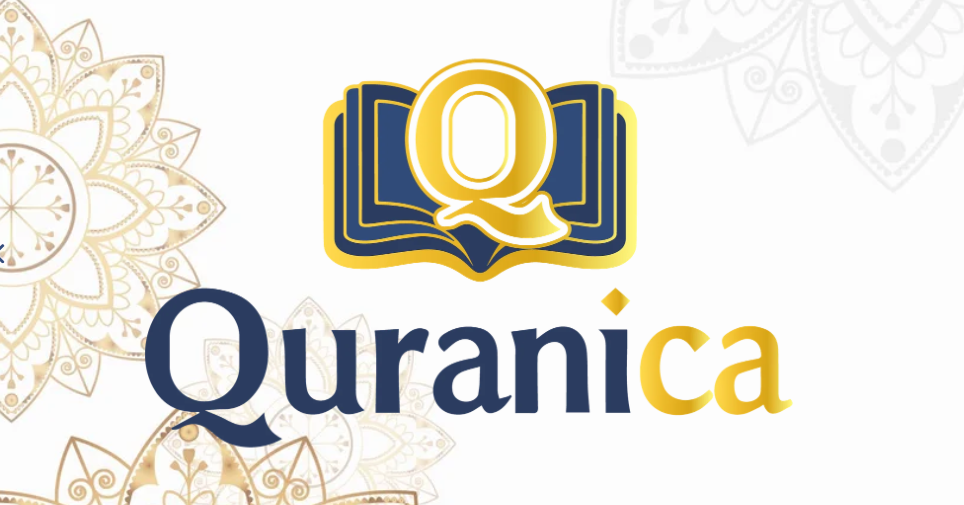
Conclusion
Understanding the Shaddah—a symbol resembling a tiny “w”—is essential in Tajweed, particularly when applied to the letters Noon (ن) and Meem (م). It signals that a letter is doubled and must be pronounced with emphasis.
A Mushaddad letter combines two forms of the same letter: the first with a sukoon and the second with a vowel. This doubling results in a stronger, clearer sound, especially vital in Quranic recitation.
When Noon or Meem has a Shaddah, a nasal sound called Ghunnah is required. This sound, produced entirely through the nose, must be held for exactly two counts, adding rhythm and clarity.
For Noon Mushaddadah, the tongue touches the upper teeth, and the nasal sound resonates clearly. For Meem Mushaddadah, the lips close fully while the sound hums through the nose, as shown in Quranic examples like “Inna” and “‘Amma”.
Unlike Mushaddad letters, Meem Sakinah follows conditional rules; Ghunnah is only applied when followed by certain letters. This contrasts with the universal Ghunnah rule of Noon and Meem Mushaddadah, which always requires two counts.
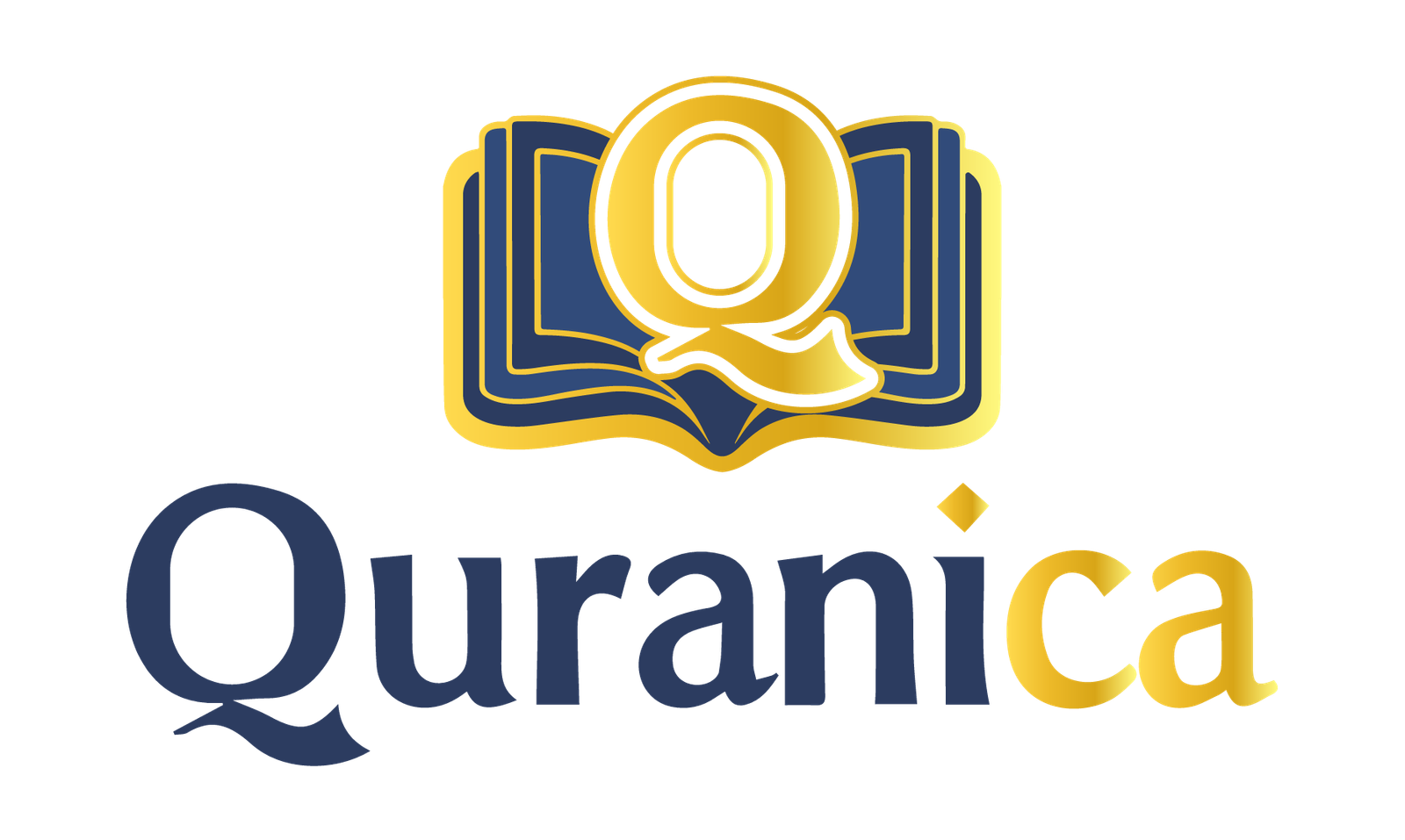
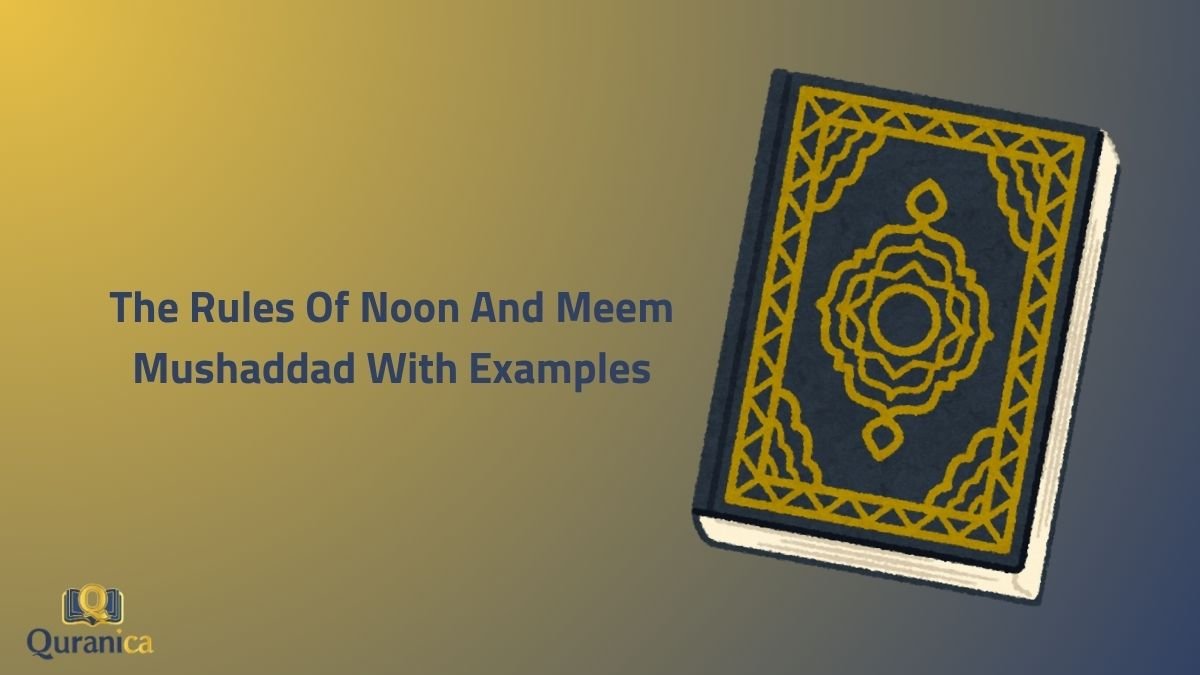






0 Comments